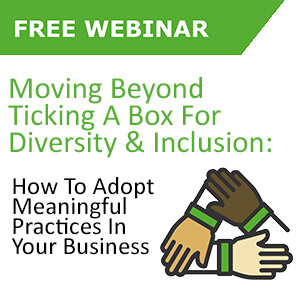
The collective consciousness around diversity and inclusion is rapidly increasing.
It’s likely that businesses will be required to provide more open reporting on their diversity and inclusion metrics in the future which will only continue to unveil the true disparity within the workforce. Based on the current rate of progress being made to shrink the gender pay gap, it’s been reported that it will still take another 30 years to reach the point of true parity. Of course, when it comes to other protected characteristics covered by the Equality Act 2010, less action has yet to be taken so progress is likely to be even slower unless businesses make real changes now.
In an environment where demand continues to far outstrip supply, candidates are now – and rightly so – challenging Hiring Managers on diversity and inclusion, even during the early stages of the recruitment process. Questions are being asked to potential employers about what they are really doing to foster diverse and inclusive cultures. Existing employees are also pushing for change – in a recent survey completed by Culture Shift, almost 2/3rds of employees state that diversity should be more of a priority in the workforce.
Whilst many businesses have applied more inclusive recruitment processes in order to increase the diversity of their workforce, those practices don’t always seem to be translating into meaningful practices or truly inclusive cultures which can successfully engage, develop, support and retain diverse talent.
Indeed, recent research published by Yale School of Management and London Business School, found that whilst 80% of Fortune 500 companies include their business case for investment in diversity on their corporate website, doing so has actually had a negative effect on the attraction of diverse and underrepresented groups because that approach feels disingenuous and led by the desire to increase profits.
So, where do you start?
Watch our webinar where we discussed how to move beyond ticking a box and instead, adopt meaningful diversity and inclusion practices in your business. During the webinar we covered:
- What The Data Tells Us About Diversity And Inclusion In Businesses
- Why You Can’t Have Diversity Without Inclusion
- How To Be Comfortable With Being Uncomfortable
- Where To Start
- Roles and Responsibilities
- An Introduction To Our Equality, Diversity and Inclusion Index
In the meantime, why not watch our previous webinars which you can find here.











